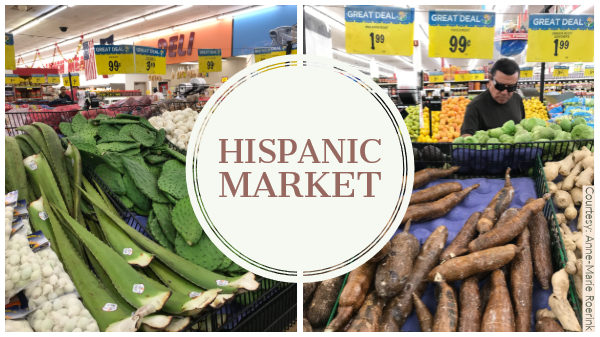As the U.S. Hispanic population grows, retailers will meet the demand, whether it’s Hispanic retail chains or mainstream retailers changing their mix to appeal to these consumers. Suppliers expect to be part of that growth.
Robert Schueller, director of public relations for Melissa’s/World Variety Produce, Inc. BB #:111686 in Los Angeles, says there’s a trend toward larger produce departments, and that’s good for everyone in the industry. “Latin culture is becoming Americanized, but as it grows, it won’t just be at specialty markets but in mainstream markets.”
In the next 10 to 15 years, Schueller sees more Hispanic produce items, like more varieties of chile peppers. “We’ll see larger bulk displays in mainstream stores as Hispanics migrate throughout the United States. It’s a good sign for better produce consumption.”
Jorge Vazquez, president of Latin Specialties, LLC BB #:165092 in Houston, TX, expects Hispanic consumers to break away from their traditional produce items. “As the United States gets more diverse, Hispanics will be eating more items like broccoli or squash or spinach, that aren’t their traditional items.”
Alex Jackson Berkley, sales manager for Frieda’s Inc. BB #:127169 in Los Angeles, thinks Hispanic retailers will get out of their own comfort zones in order to grow.
“I anticipate stores will continue to open in areas and places they weren’t before,” she says. “I’d like to see more in higher-end areas, in mainstream areas that aren’t as heavy on Hispanics. Shoppers are looking for an experience and these Hispanic markets bring such a great experience.”
Berkley also thinks Hispanic retailers will expand their produce offerings.
“In 2020, I think we’ll see Asian vegetables merchandized more in the Hispanic market,” Berkley says. “We’ll see more varieties in papayas and mangos, and the same with stone fruit, a higher profile of flavors.”
Anne-Marie Roerink of 210 Analytics, which creates the Power of Produce report for the Food Marketing Institute, hopes it becomes easier to track Hispanic retail as it continues to grow. “It’s a class of trade that’s flying under the radar, mostly because any kind of market and sales data is hard to come by.”
“But when tracking the store expansions of some of the bigger chains or exploring at the city level, it’s clear that Hispanic—or other retailers that focus on a specific ethnic group—are thriving,” Roerink says. “We’re likely going to see them jump to new cities and states and expand in number.”
This is a multi-part spotlight feature on the Hispanic produce market adapted from the October 2019 issue of Produce Blueprints.



